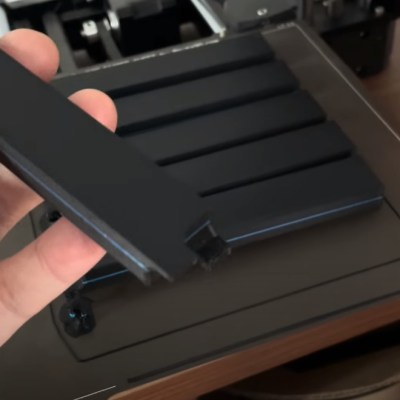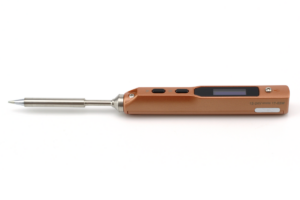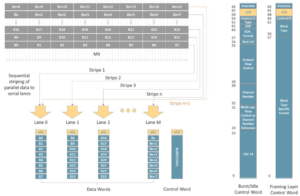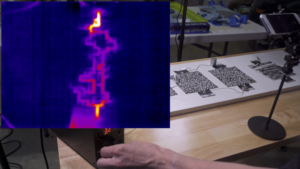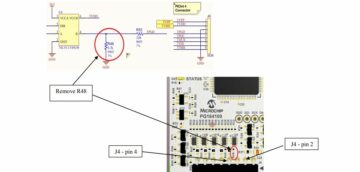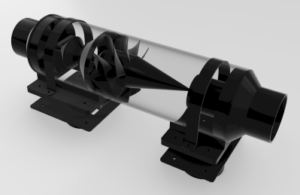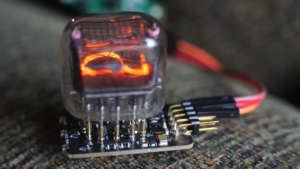A triboelectric nanogenerator (TENG) certainly sounds like the sort of thing you’d need to graduate from Starfleet Engineering to put together, but it actually operates on the same principle that’s at work when you rub a balloon your head. Put simply, when friction is applied to the proper materials, charges can build up enough to produce a short burst of electrical energy. Do it enough, and you’re on the way to producing useful power.
In a recent paper, [Leo N.Y. Cao], [Erming Su], [Zijie Xu], and [Zhong Lin Wang] describe how a functional TENG can be produced on a standard desktop 3D printer. What’s even more impressive is that the method doesn’t appear to require anything terribly exotic — just some commercially available filaments and a bunch of PTFE beads.
The TENGs can be printed in whatever size and shape is required.
” data-medium-file=”https://platoaistream.com/wp-content/uploads/2023/12/3d-printing-your-own-triboelectric-generators.jpg” data-large-file=”https://platoaistream.com/wp-content/uploads/2023/12/3d-printing-your-own-triboelectric-generators-1.jpg?w=625″ class=”wp-image-653923″ src=”https://platoaistream.com/wp-content/uploads/2023/12/3d-printing-your-own-triboelectric-generators.jpg” alt width=”320″ height=”320″ srcset=”https://platoaistream.com/wp-content/uploads/2023/12/3d-printing-your-own-triboelectric-generators-1.jpg 660w, https://platoaistream.com/wp-content/uploads/2023/12/3d-printing-your-own-triboelectric-generators-1.jpg?resize=250,250 250w, https://platoaistream.com/wp-content/uploads/2023/12/3d-printing-your-own-triboelectric-generators-1.jpg?resize=400,400 400w, https://platoaistream.com/wp-content/uploads/2023/12/3d-printing-your-own-triboelectric-generators-1.jpg?resize=625,625 625w” sizes=”(max-width: 320px) 100vw, 320px”>
So how do your print your own TENG? First, you load up an electrically conductive PLA filament and lay down a base into which a series of channels has been designed. At around the half-way point, you pause the print to insert your PTFE beads, and then swap over to standard filament for a few layers to produce an insulator. Finally, you pause again and switch back over to the conductive filament for the rest of the print, encasing the beads inside the structure.
As [Leo N.Y. Cao] demonstrates in the video below, you then clip leads to the top and bottom of the print, and give it a good shake. If everything went right, LEDs wired up to your new high-tech maracas should flash as the PTFE beads move back and forth inside. But there’s a catch. Going back to the balloon-on-the-head example, the effect at play here produces high voltages but low current — the paper says a TENG containing 60 beads should be capable of producing pulses of up to 150 volts.
Naturally, you won’t get very far with just one of these. Like other energy harvesting concepts we’ve covered in the past, such as vibratory wind generators, it would take a bunch of these working together to generate a useful amount of power. But given how cheap and quickly these printable TENGs can be produced, that doesn’t seem like it would be too much of a challenge.
[embedded content]
- SEO Powered Content & PR Distribution. Get Amplified Today.
- PlatoData.Network Vertical Generative Ai. Empower Yourself. Access Here.
- PlatoAiStream. Web3 Intelligence. Knowledge Amplified. Access Here.
- PlatoESG. Carbon, CleanTech, Energy, Environment, Solar, Waste Management. Access Here.
- PlatoHealth. Biotech and Clinical Trials Intelligence. Access Here.
- Source: https://hackaday.com/2023/12/31/3d-printing-your-own-triboelectric-generators/
- :has
- :is
- $UP
- 1
- 150
- 250
- 320
- 3d
- 3D Printing
- 400
- 60
- a
- actually
- again
- amount
- an
- and
- any
- anything
- appear
- applied
- around
- AS
- At
- available
- back
- base
- BE
- been
- below
- Bottom
- build
- Bunch
- but
- CAN
- capable
- Catch
- certainly
- challenge
- channels
- charges
- cheap
- commercially
- concepts
- content
- Current
- demonstrates
- describe
- designed
- desktop
- do
- Doesn’t
- down
- effect
- embedded
- energy
- Engineering
- enough
- Ether (ETH)
- Even
- everything
- example
- Exotic
- far
- few
- Finally
- First
- Flash
- For
- forth
- friction
- from
- generate
- generators
- get
- Give
- given
- going
- good
- graduate
- Harvesting
- head
- here
- High
- How
- HTTPS
- if
- impressive
- in
- inside
- into
- IT
- jpg
- just
- just one
- lay
- layers
- Leads
- LEO
- like
- lin
- load
- Low
- materials
- max-width
- method
- more
- move
- much
- Need
- New
- of
- on
- ONE
- operates
- or
- Other
- over
- own
- Paper
- past
- pause
- plato
- Plato Data Intelligence
- PlatoData
- Play
- Point
- power
- principle
- printing
- produce
- Produced
- produces
- producing
- proper
- put
- quickly
- recent
- require
- required
- REST
- right
- same
- says
- seem
- Series
- Shape
- Short
- should
- simply
- Size
- some
- standard
- structure
- swap
- Switch
- Take
- that
- The
- then
- These
- thing
- to
- together
- too
- top
- very
- Video
- wang
- Way..
- went
- whatever
- when
- which
- wind
- with
- Work
- working
- would
- you
- Your
- youtube
- zephyrnet
- Zhong

